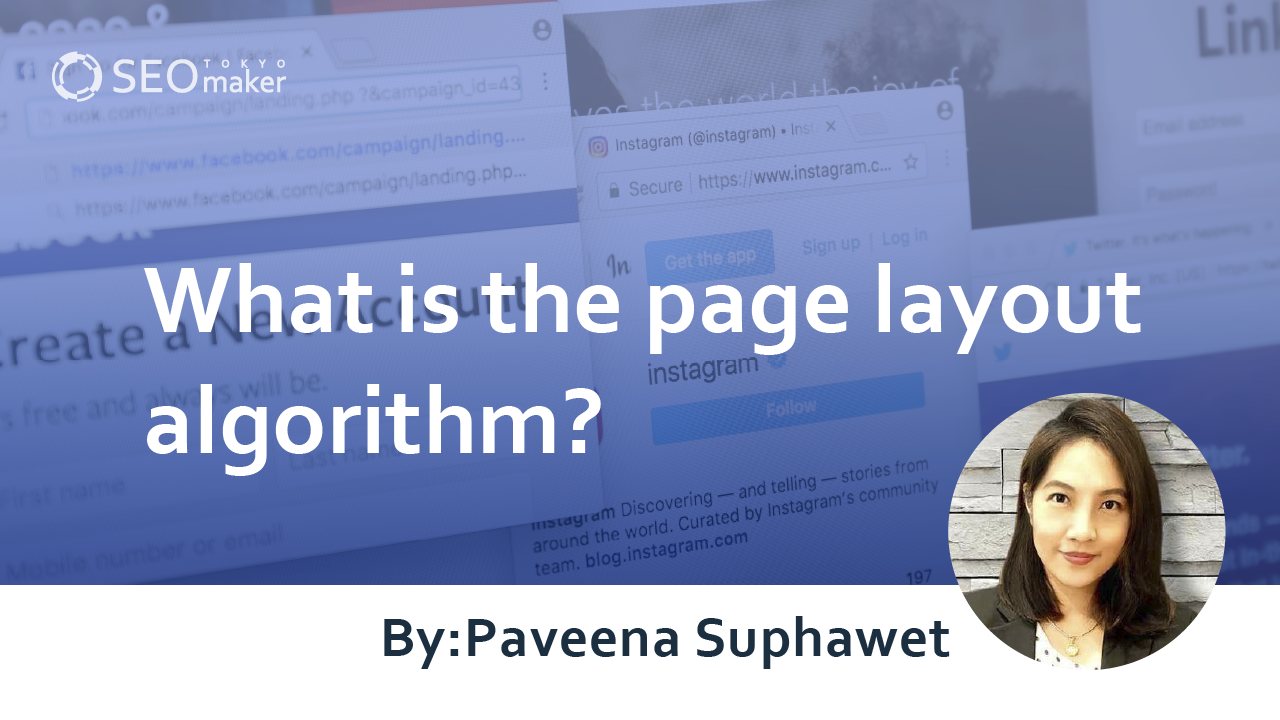What is the page layout algorithm? The Importance of the First View
contents
 The “Page Layout Algorithm” is a Google algorithm that demotes the search rankings of websites where the first view (above the fold) is dominated by large ads, making the main content hard to see.
The “Page Layout Algorithm” is a Google algorithm that demotes the search rankings of websites where the first view (above the fold) is dominated by large ads, making the main content hard to see.
Sites that overly disrupt the user experience with intrusive ads are targeted by this algorithm. It reflects Google’s user-first policy and was implemented in January 2012.
Does this mean having ads in the first view is bad? Not necessarily. Let’s delve into the page layout algorithm.
What is the page layout algorithm?
The Page Layout Algorithm is Google’s system for downgrading the evaluation of pages where the first thing a user sees is numerous ads, making it difficult or impossible to find the content they should be seeing.
Introduced in January 2012, the algorithm has been updated in October 2012 and February 2014.
However, it’s not that having ads in the first view (above the fold) is inherently bad; the algorithm specifically reduces the rankings of sites that place excessive ads in the first view. It does not affect normal sites.
In reality, less than 1% of sites were affected by this update, so it’s not considered a highly impactful algorithm. However, since this algorithm strongly reflects Google’s policy, it’s important to understand the intent behind it.
The Importance of the First View (Above the Fold)
The first view, or “above the fold,” refers to the area of a webpage that is visible without scrolling when a user first visits a website. This can vary based on the device and environment, but typically, for a desktop visitor to “Tokyo SEO Maker,” the homepage would appear as in the diagram above.
The term “fold” comes from the concept of a fold in a newspaper, meaning the top part of the page that is immediately visible.
The first view significantly influences user bounce rates, as it is where users decide whether to continue reading the page. Ideally, this area should contain major headings (H1 tags), global navigation, eye-catching images, and introductory text. Large ads in this area can lead to increased user departure.
Thus, the first view is crucial in affecting both bounce rates and user engagement.
How Much Advertising is Considered Excessive?
While excessive advertising is discouraged, Google has not specified how much advertising impacts evaluation. However, if ads fill the screen and are hard to close, it’s unlikely to contribute to user satisfaction. Websites should be managed with ease of use as a criterion.
Strategies to Address the Page Layout Algorithm
Simply not placing ads in the first view is one approach, but the standards are unclear. If you are considering the Page Layout Algorithm, focus on these three improvements rather than just ads.
Place Useful Content at the Top
Generally, users do not come to read but to find answers to their questions.
Therefore, positioning answers to search queries at the top is an effective SEO strategy and a way to comply with the Page Layout Algorithm.
While there’s concern that users might leave after getting their answers immediately, if the first view doesn’t provide them, they might leave anyway. A well-crafted lead sentence can encourage them to read more.
Consider Device and Environmental Layout
There is room for improvement if the layout makes it hard for users to find the information they need due to their device or environment.
The environment in which you test may not match your user’s environment. For instance, the appearance on smartphones can vary significantly between Android and iPhone, and even among iPhone models. The same applies to PCs with different resolutions. It’s important to create designs with a reasonable range of acceptance and then use tools like Google Analytics to monitor user OS and resolutions to make necessary adjustments.
Compliance with Webmaster Guidelines
First and foremost, Google consistently advocates for a user-first approach, which is evident if you read the Webmaster Guidelines. It’s natural to engage users’ interests.
It’s rare for SEO professionals not to have read the Webmaster Guidelines, but if you’re a web manager, it’s essential to review this document at least once.
Points to Note about the Page Layout Algorithm
When Google disapproves something, there can be an overreaction on the internet, with claims that everything related is bad, but that’s not the case.
Here’s a clear explanation about the Page Layout Algorithm
Ads in Themselves Are Not the Problem
Fundamentally, Google does not condemn ads per se. Even with Google AdSense, ads may automatically appear in the first view, but this is unlikely to cause a significant drop in rankings.
Placing ads is fine, but remember that excess in anything is to be avoided.
Site-Level Evaluation
Even if ads disrupt content on a specific page, it doesn’t necessarily mean the site will be penalized. As the overall impact is less than 1%, significant effects are uncommon. However, if the site as a whole is deemed to be cluttered with intrusive ads, a downgrade in evaluation might occur.
Improvements Do Not Guarantee Higher Rankings
While it is positive to improve a site where ads interfere with content, merely removing ads does not ensure a boost in rankings.
With any algorithm, immediate effects from corrections are not guaranteed, and it’s rare for the removal of ads to directly improve rankings in the context of the Page Layout Algorithm.
Also, consider that poor rankings may not be solely due to ad placements. It’s important to evaluate whether the overall site is beneficial for users.
Ads That Obscure Content Are Not Acceptable
As mentioned earlier, advertising itself is not a problem, but ads that completely cover and obscure content are unacceptable because they clearly hinder the user experience.
Particularly, ads that are difficult to close once displayed can lead to lower evaluations, so caution is needed.
Summary
I’ve explained the Page Layout Algorithm, but fundamentally, the importance of a user-first approach has long been advocated by Google. Proper site management should not lead to ranking issues caused by advertisements. The philosophy behind the algorithm, introduced in 2012, has not changed and remains relevant today. Continuing to prioritize user-first in site improvements is essential. If your site’s rankings still do not improve, there might be other factors at play. In such cases, please consult Tokyo SEO Maker.










![What is a Description? Explaining the Meaning, Writing Style, and Changing Word Count – [2023 Edition]](https://www.switchitmaker2.com/en/wp-content/uploads/2024/09/what-is-description.webp)










